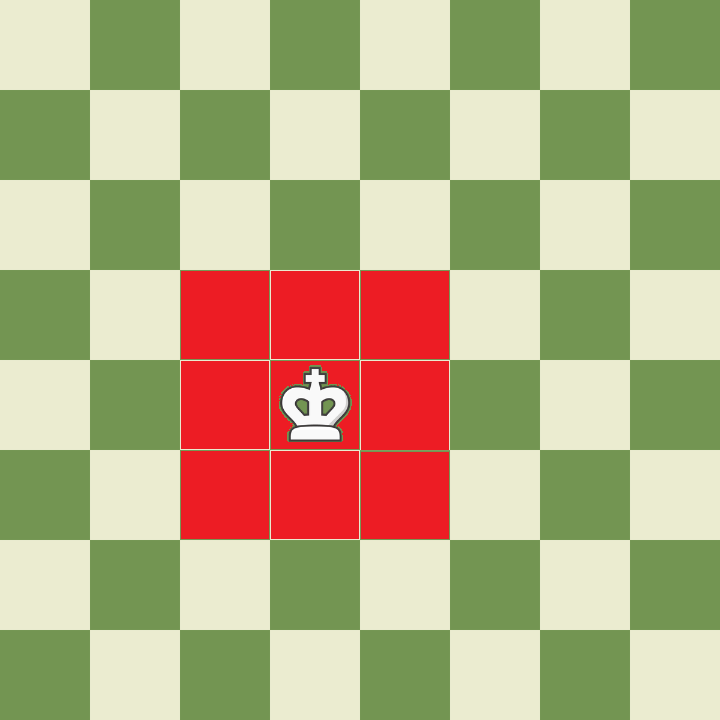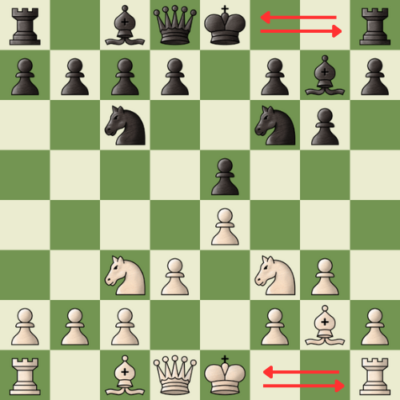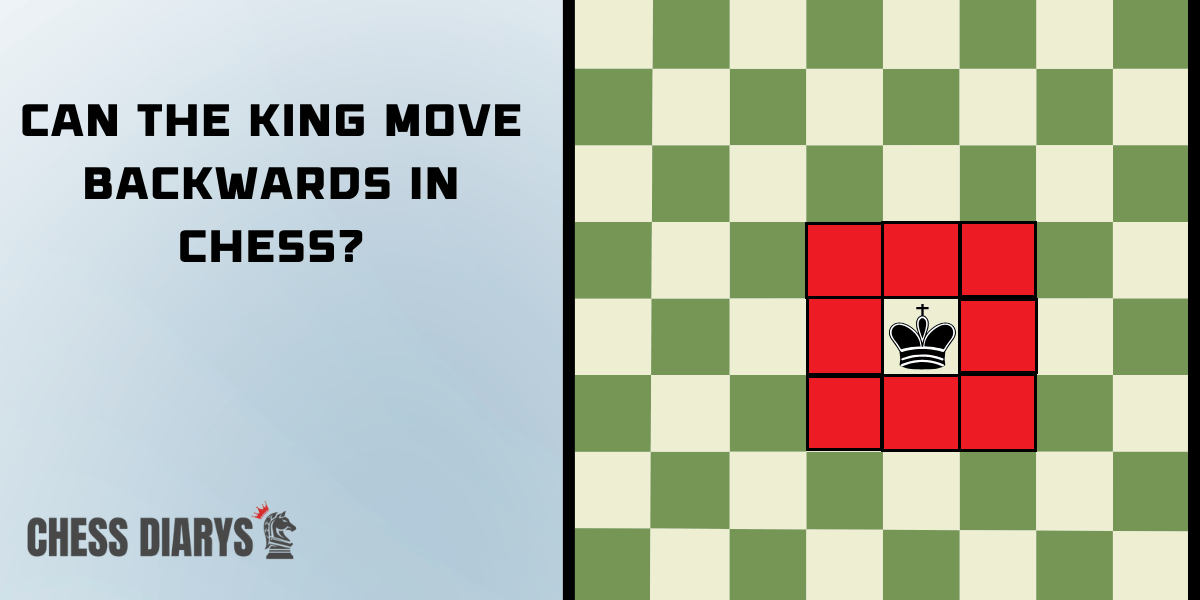When learning chess, one of the most important concepts is how each piece moves. Among all the chess pieces, the king stands as the most crucial one. If it is captured, the game ends. But how exactly does the king move, and more specifically, can the king move backwards in chess?
In this article, we will explore the king’s movement in detail, especially the rules around moving backward, and cover other essential aspects of the king’s role on the chessboard.
Overview of the King in Chess
The king is the most important piece in chess, not for its power or reach, but because if one player loses his king, that player loses the game. The main goal in chess is to checkmate the opponent’s king-a position in which the opponent’s king has no possible way to escape capture. Each player begins the game with one king: on square e1 for White and e8 for Black.
Despite its importance, the king is relatively limited in terms of movement compared to other pieces like the queen or the rook. This limitation is one of the reasons players must carefully plan their strategies to keep the king safe.

General Movement of the King
The king is unique in its movement compared to other chess pieces. It can move exactly one square in any direction — horizontally, vertically and diagonally. This allows the king to move to up to eight different squares, provided those squares are not under attack.
For example, if the king is on the square d4, it can move to:
- d3 (down),
- d5 (up),
- c4 (left),
- e4 (right),
- c3 (diagonal down-left),
- c5 (diagonal up-left),
- e3 (diagonal down-right),
- e5 (diagonal up-right).
This limited range of movement makes the king a relatively weak attacker, but a strong defender in certain positions.
Can the King Move Backwards in Chess?
Yes, the king can move backward in chess. Like all the other pieces, such as the rook and queen, the king can move in any direction, even backward.
That is, if the king is on a central square, say d4, it moves back to d3 or even further back if it keeps on moving one square at a time. One of the most important methods of defense is moving the king backwards, especially during the endgame when it should retreat to positions that are less vulnerable.
It is especially backward movement that is important for safeguarding the king against attack, or laying out a more formidable defense, as will be discussed in greater detail later.
When Should the King Move Backwards?
After all, knowing when to move the king backward plays a significant role in making the right strategic decisions.
A couple of the most common situations in which moving the king backwards is considered smart are as follows:
a) To avoid a Check:
In chess, if the opponent puts your king in check-that is, threatens to capture it on the next move-the most safe way out often would be to move your king backwards. This becomes an essential point where there is little choice ahead and when going backward provides a better position.
b) King Safety
Safety of the king is paramount during the opening and middle-game phase. Often, in several games, pushing the king backward is the ideal method of sheltering it from possible attacks, especially after castling.
Castling itself is a special move which lets the king go back, indirectly to a safer position, very often. More on this move will be discussed in the next section.
c) Strategy in Endgame
During the endgame, when there are fewer pieces on the board, the king becomes much more active, but also important is the ability to retreat at the proper time.
Going backward may save the king from various traps and stalemates while preparation for a more appropriate moment would take place.
Restrictions on the King’s Movement
Although the king has the ability to move backwards and in any direction, there are several important restrictions to keep in mind:
a) No Moving Into Check
The king can never move to a square that is attacked by an opponent’s piece. This means that even if the king has an option to move backward, it cannot move there if the square is under threat. This is a key reason why players often move the king backward during a check.
b) One Square at a Time
The king can only move one square per turn, which limits its mobility compared to pieces like the queen or rook. This makes it important to be cautious about moving the king too close to enemy pieces, as it can be hard to escape dangerous situations.
c) Blocked by Own Pieces
Like all other pieces, the king cannot move to a square occupied by its own piece. If your pieces are positioned behind the king, it may limit the king’s ability to move backward.
Special Moves Involving the King:
Special moves that include the movement of the king backwards indirectly are as follows:
a) Castling
Castling is the movement that involves the king moving two squares either to the left or right and the rook jumping over it. Castling is a helpful move whereby the king moves into a more defensive position.
The king may later play backward after castling with the intention of defending from attacks or being kept in safety in the corner of the board.

b) King and Pawn Endgame
In the endgame, the king often collaborates with pawns to advance them into more powerful pieces. Sometimes, the king needs to move backward to avoid opposition from the other player’s king or other pieces.
Proper rearward movement may enable your king to lead pawns more effectively toward promotion.
Importance of King Movement in Chess Strategy
This backward movement of the king plays an important part in both offensive and defensive strategy. In the opening phase, the king must be kept as safe as possible, with castling often carried out and usually a backward move to the corner of the board.
Later on, in the endgame stage, when many pieces have been exchanged, the king becomes much more active, and how to push it backward or forward decides sometimes the fate of a game.
The backward motions give mobility to the king, and when the retreat options become scanty, the mastery of this part of the game will help in safeguarding the king while coordinating your other pieces effectively.
Conclusion
can the king move backwards in chess? The answer is absolutely yes. Since he can move in any direction, including backwards, he therefore forms part of your equipment both in defense and in the endgame.
Whether you’re trying to avoid a check, castling for the purpose of keeping the king safe, or setting up that perfect strategic counter-attack, the moves and knowledge of when the king needs to be moved backward become critical to success in chess.
Mastery over finer details in the king’s movement, including its ability to move backwards, will be highly instrumental in giving you the insight needed into the game.
Whether you are a beginner or an advanced player, using the king wisely may just be the key to protecting your position and sealing victory.









